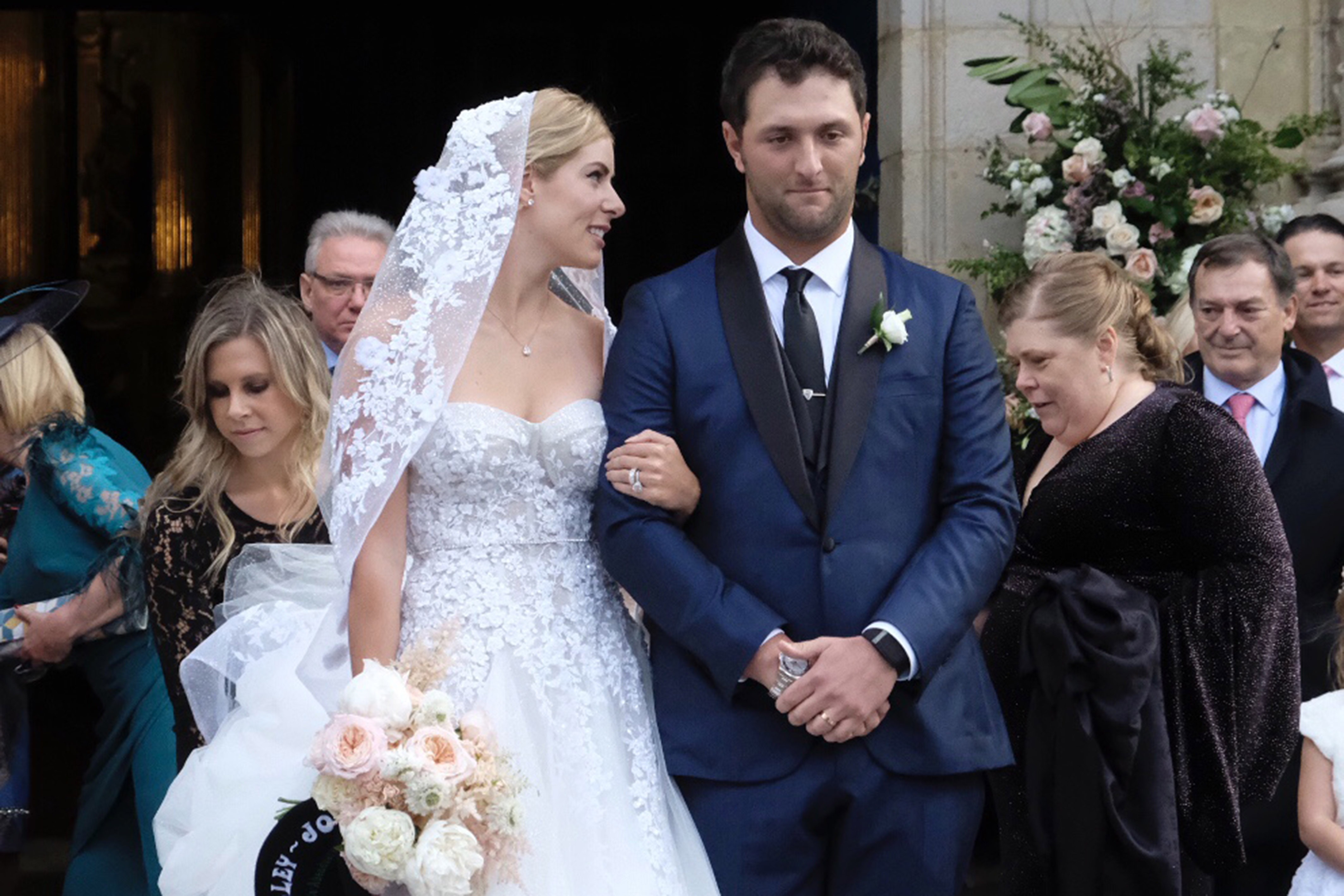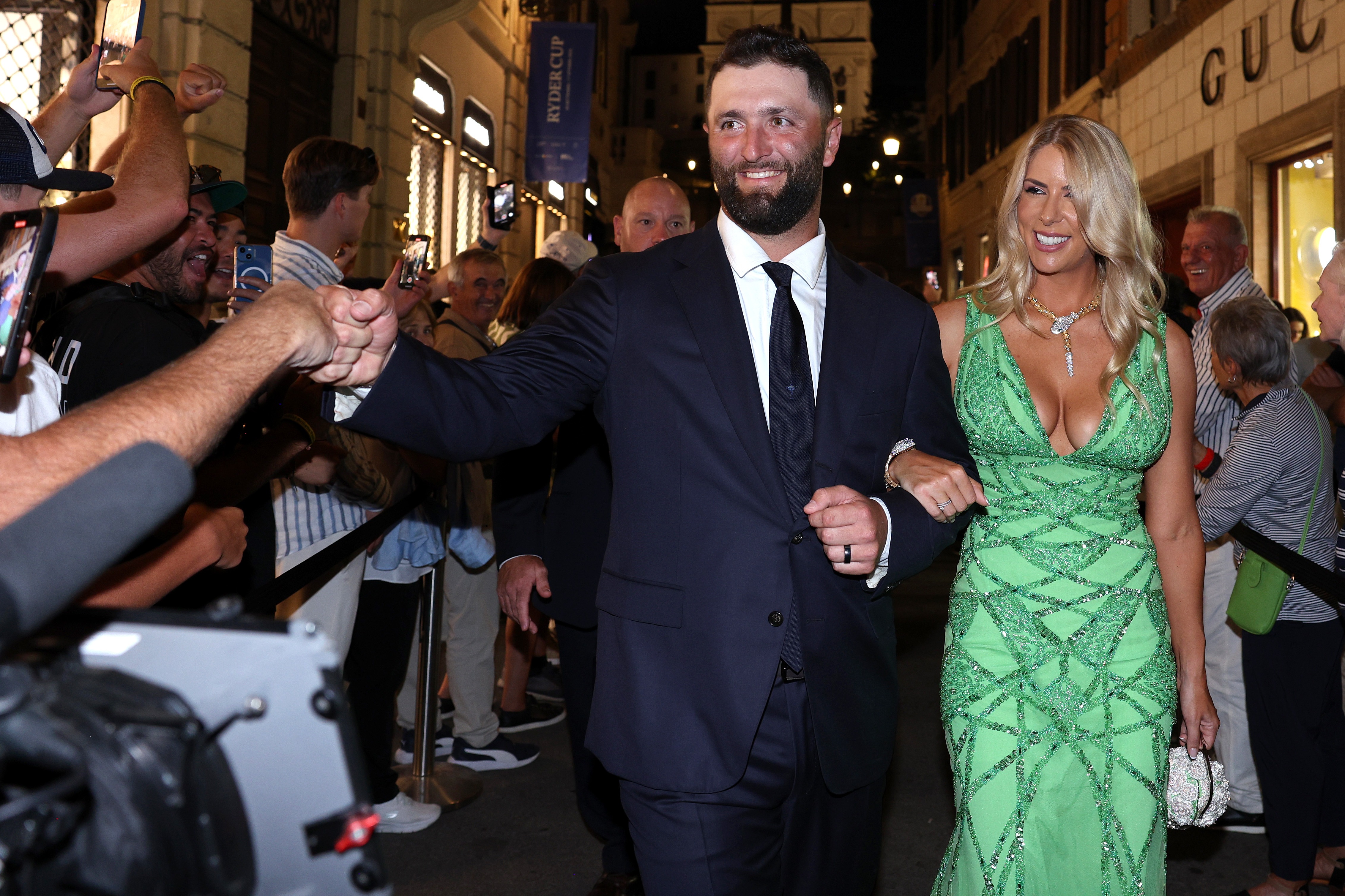Early Life and Sporting Background
Kelley Cahill, born in February 1994, grew up in Lake Oswego, Oregon, USA, alongside her brother Marty. She attended Arizona State University, where she excelled in javelin and was part of the track and field team.
Love Story with Jon Rahm
Cahill and Rahm began dating while studying at Arizona State University. Their relationship blossomed, and Rahm proposed before the 2018 U.S. Open, designing a unique ring for his beloved.
From Marriage to Parenthood
The couple tied the knot in Bilbao at the end of 2019. Rahm expressed his commitment to his family, even willing to walk out on the Masters if Cahill went into labor. Luckily, their first child arrived early, followed by the birth of their second son in August 2022.
Expanding Their Family
In March 2024, Rahm announced their third pregnancy on Instagram, sharing the news of their growing family with their followers.

Frequently Asked Questions
What is course management and its importance in golfer training for professional players?
It is an important part of the training process for professional golfers. This goes beyond just athleticism and technique. It involves strategic decisions that take into account different risk/reward scenarios. A golfer will learn to evaluate factors like wind conditions, topography of the course, hazards and pin placements during training. Golfers who work with an expert caddy can create game plans to maximize their strengths and minimize their weaknesses.
What would a typical pro golfer training schedule look like?
Professional golfers are required to follow strict training programs that address every aspect of their game. A standard golf training day could include hours spent on the driving course perfecting their swings with different clubs, time on the putting and chips greens, as well as physical fitness exercises. Mental conditioning is also a regular part of the routine, to ensure that they stay sharp and focused when under pressure. Golfers analyze their data to help them improve their game. They may also spend time working with a coach. In order to achieve peak performance, it is important that golfers prioritize rest and recovery.
What are some of the common injuries golfers experience and how do you prevent them?
Back pain, wrist injuries and tendinitis are common injuries for professional golfers. In order to prevent injuries, professional golfers use regular fitness training that focuses on strengthening the muscles they use for golf as well as increasing flexibility. Golfers also employ swing analysis to ensure their technique is not putting undue stress on their bodies. Warm-up exercises, good nutrition, and consultations with physical therapists can all help prevent injury.
How do golf pros prepare for a competition?
Preparing for a championship is a process that involves mental and physically. Pro golfers arrive at the course a few days early to familiarize with the layout, and any challenges the course may present. They will practice their short game and adjust their gear as necessary. Physically, the players will ensure that they are in top condition and have a good rest. Mentally, they can use visualization techniques to establish a calm and positive mindset.
Can pro golfers train too much?
Professional golfers are at risk of overtraining. Over-extending themselves with excessive practice can lead to physical injuries such as tendinitis or mental burnout. It’s essential for golfers to listen to their bodies, prioritize recovery time, and maintain a balanced training schedule. It is more important to focus on quality than quantity when it comes to practicing. Rest days are strategically scheduled to allow the body and mind to recover.
Do pro golfers focus on specific muscle groups?
Pro golfers are trained to work all muscle groups but focus on those that contribute directly to their golfing swing and stability. Core strength is key to controlling your swing and maintaining your balance. Thus, abdominal, oblique, and lower back exercises are a staple. Golfers must also have strong gluteal, leg and arm muscles to build a solid foundation. Shoulders and arms should be flexible and strong for the golf club’s range of motion. Golf-specific programs are designed to target these key areas while still maintaining a healthy overall body.
Statistics
- Statistical data indicates that around 50% of pro golfers have experienced a golf-related injury due to overtraining.
- On average, professional golfers dedicate 30 to 40 hours per week practicing various aspects of their game.
- An estimated 60% of professional golfers change at least one piece of their equipment each season.
- Rest days are included in 100% of the training schedules of top professional golfers to prevent burnout and injury.
- According to a fitness survey, 55% of professional golfers prioritize yoga and pilates for improving flexibility and core strength.
- About 70% of professional golfers report practicing in adverse weather conditions to improve their adaptability to the elements.
- Pro golfers over the age of 35 tend to dedicate at least 20% more time to flexibility training than their younger counterparts.
- Studies show that consuming a balanced diet is a priority for 95% of professional golfers as part of their training protocol.
External Links
pga.com
swingu.com
18strong.com
pga.com
golfdigest.com
golftips.golfweek.usatoday.com
golfweek.usatoday.com
sciencedirect.com
How To
How to Develop a Balanced Golf Training Schedule
For professional golfers to create a balanced schedule, divide the practice time among the major components of their game: long-shots, short-game, and putting. It is okay to give yourself more flexibility and focus on the weaker areas. Incorporate physical conditioning with an emphasis on flexibility, core strength and aerobic fitness. Additionally, include time for mental training, including visualization and concentration exercises. Recovery days must be incorporated to prevent overtraining and ensure the golfer remains refreshed and focused.

